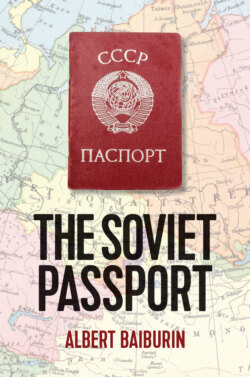Читать книгу The Soviet Passport - Albert Baiburin - Страница 12
Notes
Оглавление1 1. An obvious reason behind this practice is that foreign passport holders form a minority, though an increasing one, of the US population: in 2007, the proportion stood at 27%, while in 2018 it was 42%, a figure significantly lower than in European countries, with an average of 60%, and the UK, at 73% in 2018.
2 2. There were, of course, many other arguments around the ID cards, particularly data privacy versus better access to information (Paul Beynon-Davies, ‘The UK national identity card’, Journal of Information Technology Teaching Cases, Vol. 1, 2011, pp. 12–21), and, of course, opinion is not unified on the issue, but all the same, the contrast between the British (and more specifically English) firm belief in the right to move around without ID checks within the country seems to be the established counterpart to the conviction that impermeable borders are vital in terms of keeping out those who live outside it – a major motivating force in the campaign for Brexit.
3 3. This is not a question of a simplistic opposition between ‘Soviet’ (or ‘post-Soviet’, or ‘Russian’) and ‘Western’ prescriptions and realities. As has often been pointed out by specialists on the history of the identity document (see, e.g., Jane Caplan and John Torpey (eds.), Documenting Individual Identity…), many European countries, notably France and Germany, also have a lengthy history of national identity cards that share some of the functions of the pasport.
4 4. Colin Thubron, In Siberia, p. 132.
5 5. As the Russian scholar Aleksandr Dmitriev has shown, these associations were so pervasive that the centenary of the Emancipation of the Serfs in 1961 provoked as much embarrassment and confusion as celebration. ‘Posle osvobozhdeniya: “Velikie reformy” i khrushchevskaya ottepel’ v perspektive russkoi istoricheskoi mysli’ [After Emancipation: The “Great Reforms” and the Khrushchev Thaw in the Perspective of Russian Historical Thought], Novoe literaturnoe obozrenie no. 142 (2016), https://www.nlobooks.ru/magazines/novoe_literaturnoe_obozrenie/142_nlo_6_2016_spetsialnyy_vypusk_t_2_rabstvo/article/12230/.
6 6. Precisely in this capacity, it figures in, for example, David Shearer, Policing Stalin’s Socialism: Repression and Social Order in the Soviet Union, 1924–1953. New Haven, CT: Yale University Press, 2009; Paul Hagenloh, Stalin’s Police.
7 7. Elza Guchinova (ed.), ‘“All roads lead to Siberia”: Two stories of the Kalmyk deportation’, Forum for Anthropology and Culture, Vol. 3, 2007, pp. 239–86.
8 8. It is worth emphasizing this point, since one of the achievements of Baiburin’s book is to take discussion of the Soviet passport beyond the migrancy issues that have been central to many previous analyses. As Baiburin emphasizes, the history of the propiska, or inscription of a right (and duty) to reside in one particular place, and the pasport are closely intertwined, but they are not identical. In post-Soviet Russia, the propiska has been replaced by a registratsiya (registration) that is more like the advisory notification to be found in, say, France (or the ‘proof of address’ required by many British bureaucracies and also commercial organizations, such as banks, though supplying this is actually more difficult because evidence needs to be no more than three months old).
9 9. I say ‘holding’ a document because, as Baiburin points out, no-one really ‘owns’ a passport: rather, it ‘owns’ the holder or the ‘bearer’.
10 10. To me and many others, the cover actually looks black.
